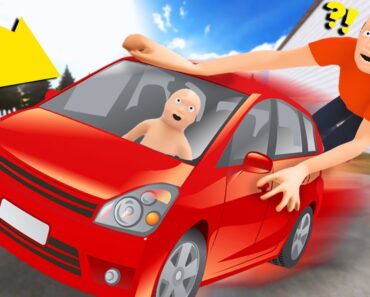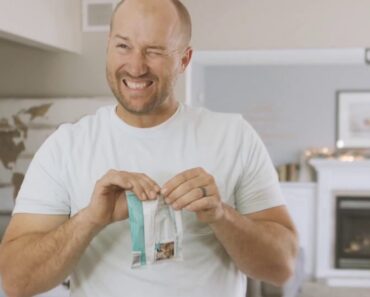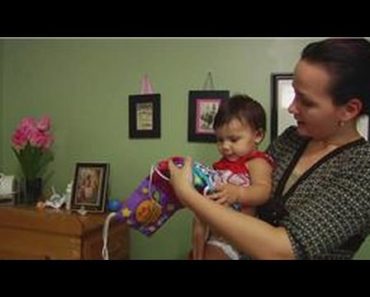Newborns cry right from the moment they take their first breath outside the mother’s womb. While the crying is both memorable and endearing for the parents, did you know they don’t shed a tear while crying? The lacrimal glands or the tear glands take time to produce adequate tears to shed while crying.
Read on to learn why newborns don’t shed tears, when do tears appear while crying, and what might affect tear production in babies.
Why Don’t Newborns Shed Tears?
Tears are produced by a lacrimal gland (tear gland) present at the upper edge of each eye (1). At birth, it can produce tears sufficient enough to lubricate the eyes. However, the glands are not adequately developed to produce a quantity of tears that can roll down the eyes while crying. Therefore, you are unlikely to see a newborn shed tears while crying.
When Does A Baby Begin To Shed Tears?
Most babies begin to shed tears sometime between the ages of two and three weeks (2). By this age, the lacrimal glands are developed enough to produce a significant amount of tears noticeable while crying.
What Happens If Newborns Shed Tears Early?
It’s unlikely for a newborn to shed tears up to three weeks after birth. If the baby does have teary eyes soon after birth or up to three weeks, it could indicate an underlying problem.
The following are some of the common conditions that could cause a newborn to shed tears earlier than usual.Many of the conditions cause teary eyes even when the baby is not crying.
1. Blocked tear ducts
Tears move through small openings at the inner corner of the eyes and flow through the tear ducts (nasolacrimal ducts), which drain the fluid into the nasal passages.Sometimes, in babies, the opening to the duct is fully or partially blocked by a thin piece of tissue. Tears have no place to drain out of the eye and flow out on the face (3). This condition is called lacrimal duct obstruction or dacryostenosis.
Blocked tear ducts are common among infants, and about 6% of newborns have a blocked tear duct at birth. Most blocked tear ducts open by themselves by the age of 12 months. A pediatrician can teach parents ways to gently massage the tear duct to stimulate its opening.
2. Infections
Several infections could cause tearing in newborns. A few notable conditions are upper respiratory infections and conjunctivitis (4). A clogged tear duct may also become infected by pathogens. Common symptoms of infections include redness in the eyes, presence of pus, and inflammation.
Upper respiratory infections, such as the common cold, can lead to excess tearing. Conjunctivitis, also called pink eye, can occur due to pathogens (viruses, bacteria, and fungi), allergens, and even foreign particles (5). Relevant treatment of the condition can lead to relief from tearing.
3. Glaucoma
Pediatric glaucoma is an eye condition where the optic nerve is damaged (6). It may affect one or both eyes. The condition usually occurs due to increased pressure (intraocular pressure) inside the eye, leading to the damage of the optic nerve.Excessive tears are one of the many symptoms of the condition (7).
Babies can have glaucomaat birth due to various reasons, including genetic problems and poor eye development. Medication and surgery are usually required to correct any eye defects and restore normal eye functions. The prognosis post-surgery is good, especially when treatment is initiated early.
When To See A Doctor?
Visit a pediatrician if the baby sheds tears before three weeks of age. Most of the conditions that cause early tearing have symptoms noticeable to the parents and the pediatrician during regular check-ups.
See a doctor if the baby has:
- Pus in the eyes
- Redness of the white of the eye
- Eye irritation
- Swollen upper or lower eyelid
- Cloudy appearance of the pupil
What Happens If A Baby Continues To Not Produce Tears?
If your baby is growing well and has healthy eye development, there is usually nothing to worry about the lack of tears. The tear glands in some babies may take several weeks to develop enough to produce tears that shed. Nevertheless, if your baby does not shed tears even after attaining the age of one month, consult a pediatrician.
Some conditions that may cause a lack of tears in older babies include:
- Alacrima: It is a rare condition that causes poor or lack of formation of tears. Several genetic disorders can cause alacrima (8). Long-term management with topical lubricants might be needed in cases of alacrima (9).
- Dehydration:Dry and sunken eyes are some of the significant symptoms of dehydration in babies (10). Dehydration is usually a concern when the baby has diarrhea due to gastrointestinal infections. Adequate breastfeeding or formula feeding and oral rehydration with electrolyte solution after consulting a doctor can provide relief (11).
The body of a newborn is constantly growing and many body parts, including lacrimal glands, require a few extra weeks to improve their function. As weeks pass by, the baby’s eyes will become moister and eventually have tears that roll on the face while crying. Regular check-ups with the doctor can ensure that the baby’s eyes and tear glands develop healthily.

































